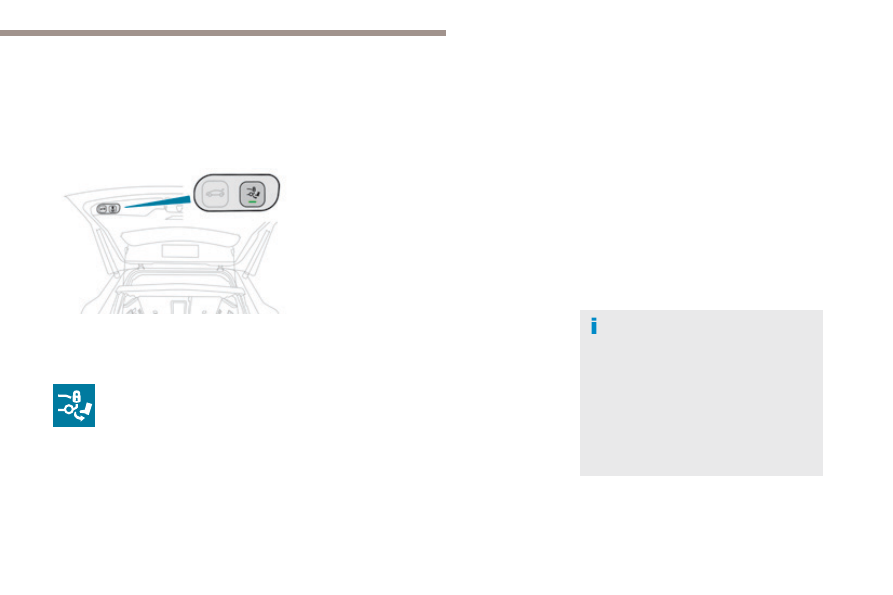Peugeot 3008 (2017 year). Manual - part 6

2
Access
79
3008-2_en_Chap02_ouvertures_ed01-2016
When opening and closing a motorised tailgate
manually, there is no assistance from gas-filled
struts. Resistance to opening and closing is
therefore entirely normal.
Repeated opening and closing of
the motorised tailgate can cause
overheating of its electric motor, after
which opening and closing will not be
possible.
Allow at least 10 minutes for the electric
motor to cool down before operating the
tailgate again.
If you are unable to wait, operate it
manually.
Detection of obstacles
If an obstacle (person or object) is
encountered, the anti-pinch system stops the
closing movement and raises the tailgate by a
few centimetres to clear the obstacle.
Memorising an opening
position
Where height is restricted (garage with a low
ceiling, ...) it is possible to limit and memorise
the opening angle of the motorised tailgate.
This memorisation is done as follows:
F open the tailgate to the desired position,
F press button C or the exterior control B for
more than 3 seconds.
Memorisation of the maximum opening position
of the tailgate is confirmed by an audible signal.
To cancel the memorised position:
F stop the tailgate in an intermediate
position,
F press button C or the exterior control B for
more than 3 seconds.
Cancellation of the memorised position is
confirmed by an audible signal.
Manual operation
The tailgate can be opened and closed
manually, even if motorised operation is
activated.
However, any manual operation must be done
with the tailgate first stopped.
It is possible to activate automatic locking of
the vehicle on closing the tailgate, using the
Hands-Free Tailgate Access function.
F Press this button; its indicator
lamp comes on.
Pressing this button again deactivates the
function; its indicator lamp goes off.
Automatic locking by the Hands-
Free Tailgate Access function